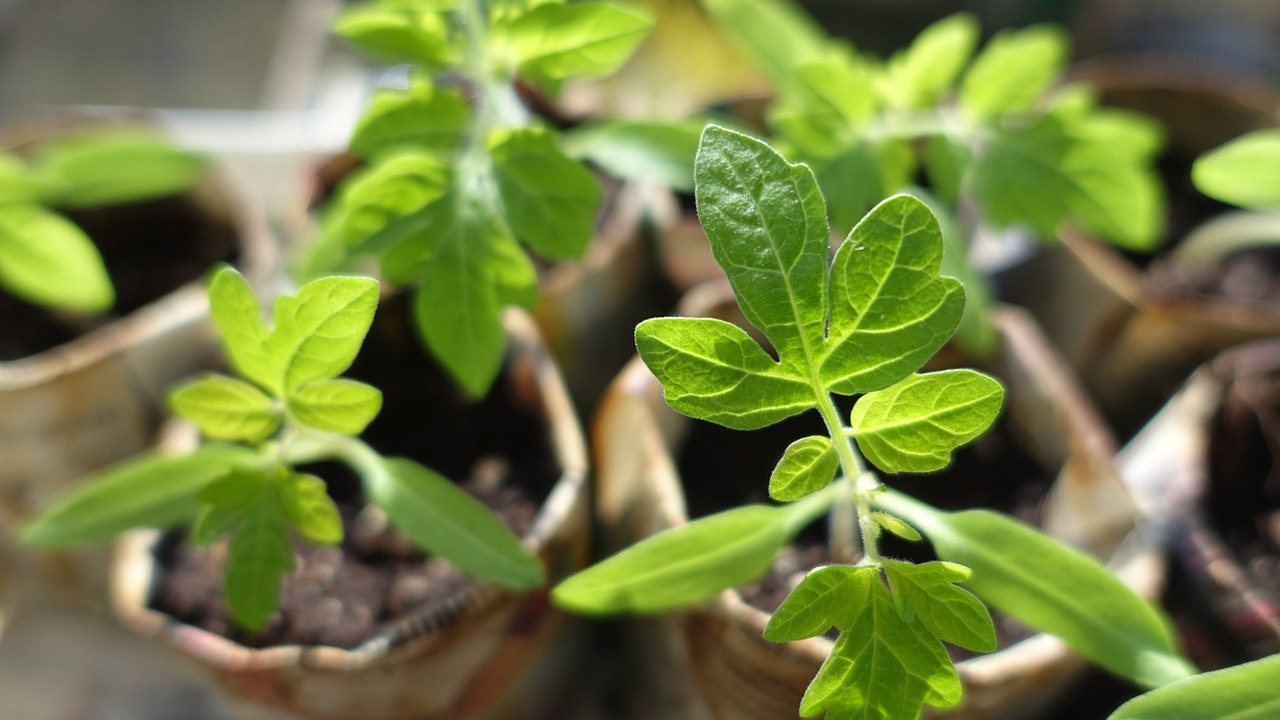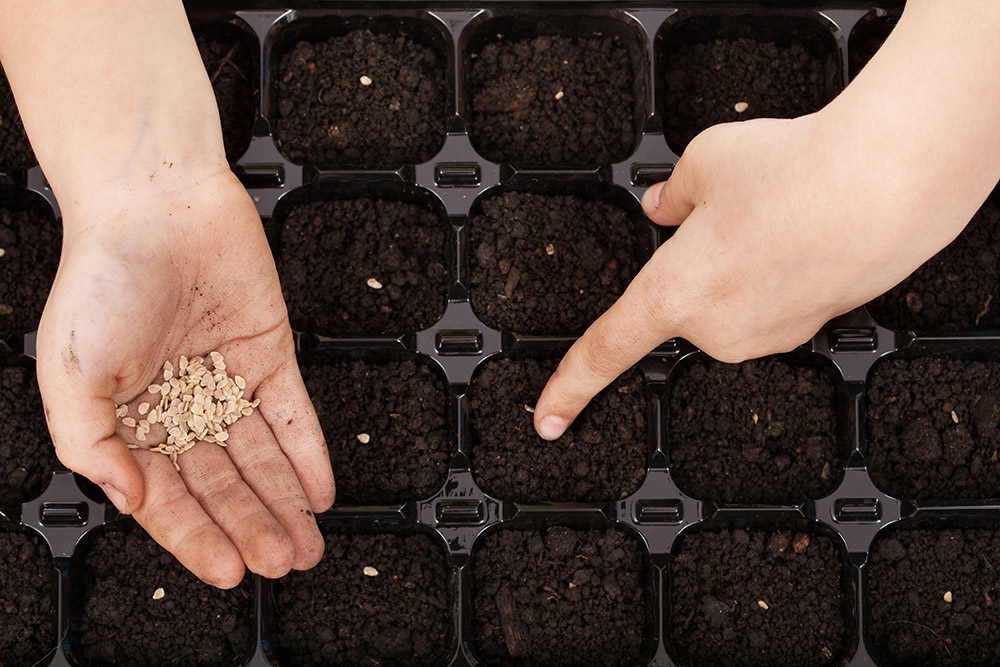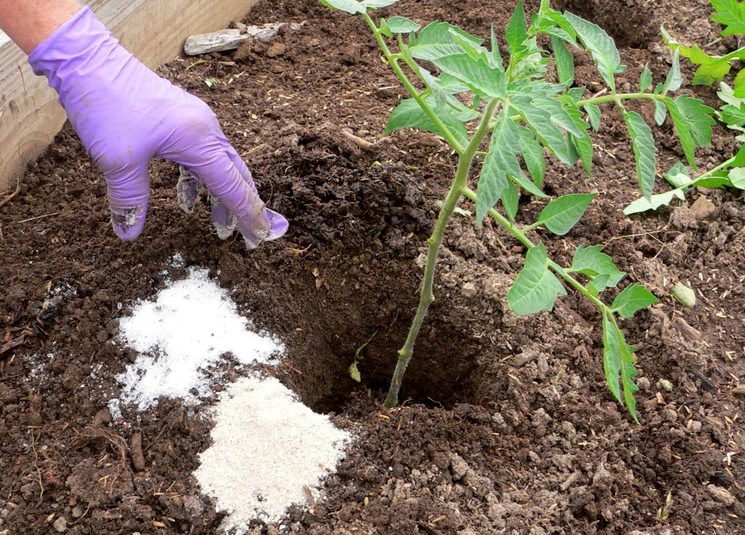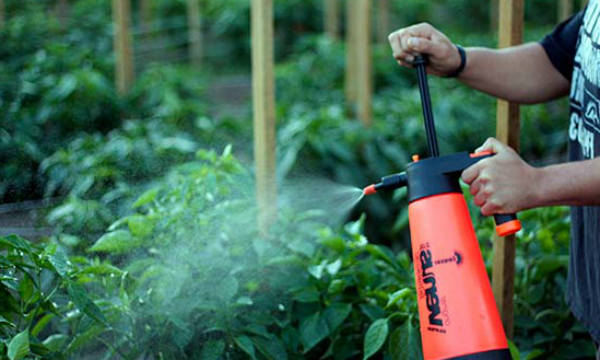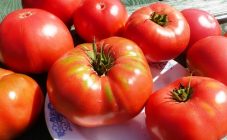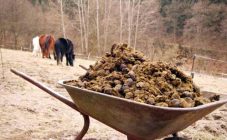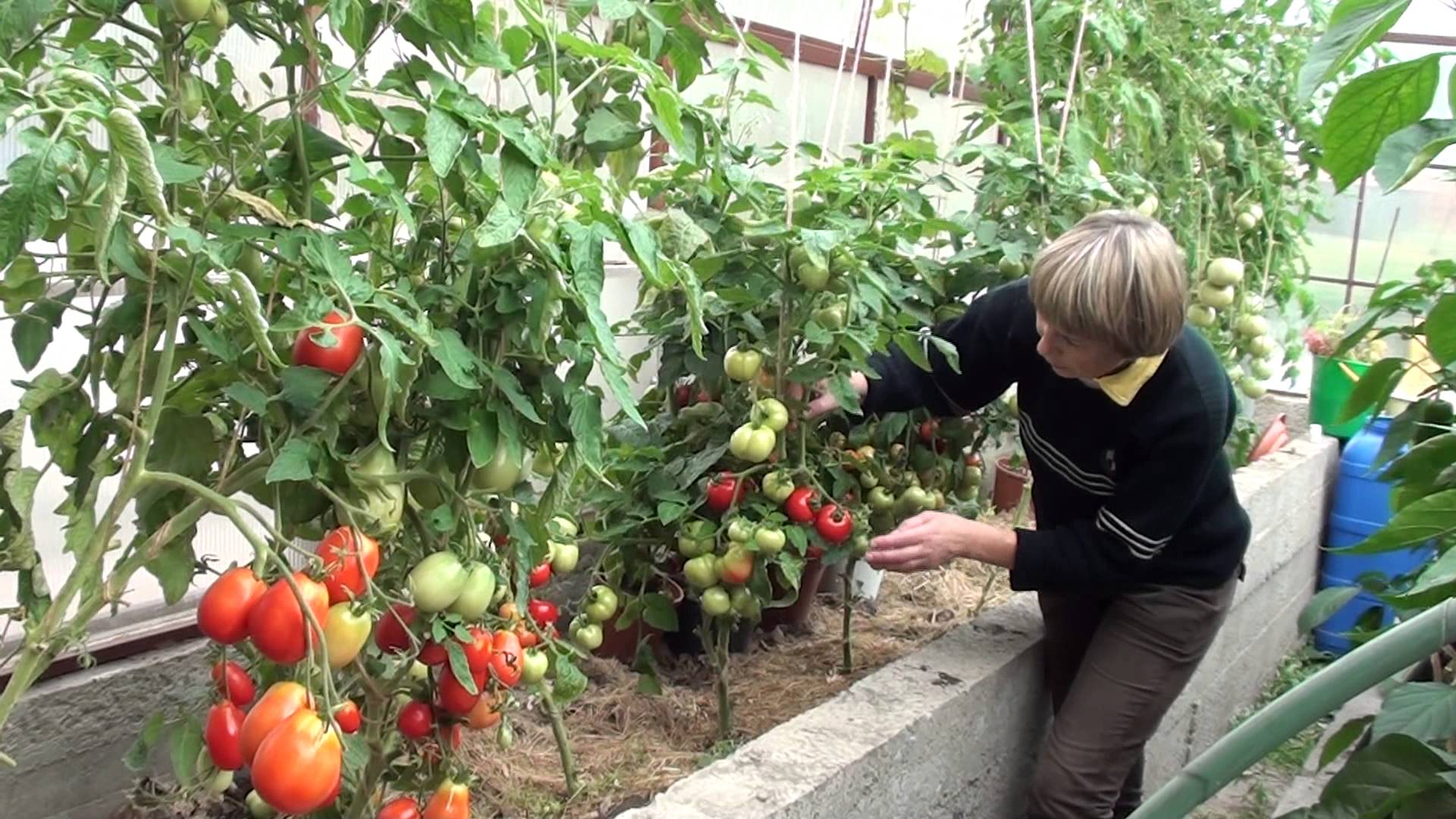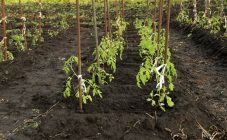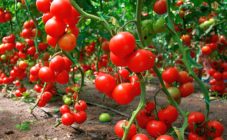Content:
Every farmer or summer resident wants his tomato garden to bring a big and good harvest. Tomatoes love good quality feeding and good soil, but too much fertilization will only hurt the plant. In any case, it is better to "underfeed" than to oversaturate the seedlings with nutrients. It is worth adhering to the phased application of fertilizers for tomatoes, providing them with those trace elements that are necessary at a certain stage of the growing season.
From this article, you can find out what fertilizers to use when planting tomatoes, whether tomatoes like manure, droppings, ash, whether it is possible to plant tomatoes in humus, compost pits, warm beds, manure heaps.
General recommendations for feeding
To harvest a good harvest, you need to know exactly which fertilizer you cannot use when planting tomatoes. When growing tomatoes, farmers do not recommend:
- fertilize tomatoes with mullein more than three times per season;
- planting a plant in overly fertilized soil;
- add manure or chicken droppings to the holes before planting;
- fertilize tomatoes with urea;
- plant different varieties in the same garden;
- watering often will prevent oxygen from reaching the roots.
The most essential trace elements that a tomato needs are potassium, nitrogen and phosphorus. They are necessary from the moment of seedling germination to strengthen the root, early flowering, ripening of fruits and increase the yield.
How to feed a tomato when planting in open ground
It is important to thoroughly figure out how to fertilize tomatoes when planting. As already mentioned, chicken manure and mullein, they do not like tomatoes, experienced gardeners use the following fertilizer when planting tomatoes:
- Fertilizing on yeast is a mixture of 10 g of dry yeast and a bucket of water, which is kept for a day and before planting seedlings, pour a glass of the mixture into the holes. Yeast is the best growth promoter.
- Powdered eggshells thrown into a hole provide the plant with the calcium it needs.
- Ash supplies potassium to the root system.
- A mixture of superphosphate and urea helps the seedlings take root faster.
If the soil has been fertilized since autumn or spring, then there is no need to feed the soil before planting seedlings. In this case, the planted tomatoes are fertilized after 2 weeks. The next dressing is carried out during the flowering period, while using organic and mineral fertilizers.
Nitrogen fertilizers include: urea, saltpeter, carbomide. Phosphorous substances - superphosphate. Potassium fertilizers: potassium sulfate, potassium sulfate.
It is forbidden to add agrochemicals to the wells, as direct contact with the root system will destroy it. Such fertilizer is mixed with soil and applied at the time of digging the site or one day before planting.
What fertilizers are suitable for feeding the soil
Preparing a garden for tomatoes is a crucial and serious stage in the process of growing them. Experienced gardeners have been preparing soil for planting since autumn, applying organic fertilizers: compost, humus, ash. At such moments, black soil is saturated with phosphorus and potassium. If it was not possible to fertilize the ground in the fall, this must be done in the spring before planting.Novice gardeners often ask: is it possible to put fresh manure under tomatoes? Absolutely not.
On highly and low-fertile soils, mineral fertilizers are necessarily used. If on highly fertile soil you can do without organic feeding, then on infertile organic matter is mandatory.
What fertilizers to apply in spring for tomatoes
The most effective organic feedings are:
- Cow, horse, pig, sheep manure. Horse manure is often used by farmers when fertilizing tomato seedlings, it is applied after composting.
- Chicken manure is a very intense organic fertilizer that quickly burns the root system. It is also brought in after composting with straw or peat, in proportions 1: 2, and in liquid form - 10 g of droppings per bucket of water.
- Ash is a very valuable fertilizer, which contains potassium, phosphorus and many other trace elements, and the consistency is easily absorbed by plants.
- Liquid top dressing is a variety of herbal infusions, for example, nettle, flooded with water and infused for two weeks. This is the most affordable fertilizer. Plants contain such chemical elements as potassium, calcium, magnesium, vitamins A, B, E, K, organic acids, tannins, phytoncides. All these substances are necessary for growing seedlings, and due to the consistency of the fertilizer it is easily absorbed.
- In garden shops, ready-made organic fertilizers are sold: Vermix biohumus, Nadezhny compost, Piksa supercompost and others.
Most often, tomatoes are planted through seedlings, growing them in the house from seeds. The land must be warmed up before landing, while the air temperature must be positive and steady. A week before the expected planting of tomatoes, the soil is watered with hot water and the bed is covered with a film, after which they begin to plant.
In addition to preparing the soil, the territory for the tomato garden should be changed annually, even in greenhouses. Tomatoes cannot be grown after the nightshade family: eggplant, potatoes, peppers. Tomatoes cannot be planted next to potatoes, because they have common pests - the Colorado potato beetle and late blight. The Pumpkin family is the best predecessor for tomatoes - pumpkin, zucchini, cucumbers.
Natural dressing recipes
Healthy and strong seedlings are the key to a good harvest. When the plant does not develop well, and white spots appear on the leaves, feed with chicken droppings or manure, diluting with water 1 to 10. Pour half a glass of such a mixture under each bush, this activates growth. There is a wide variety of nutrients for feeding tomatoes, both organic and mineral.
Bread dressing for cucumbers and tomatoes is effective thanks to the yeast. They stimulate growth, increase immunity, strengthen the root system and the vegetative part of the plant, make the plant more resistant to various diseases. The recipe does not imply exact norms, depends on the amount of bread that is available and even with a thick consistency will not bring any harm to the plant.
Bread fertilizer recipe:
- From the remains of bread and crackers, cut into cubes 1-2 cm.
- The finished slices are placed in a bucket, barrels and filled with water so that the bread is completely covered with liquid.
- The mixture is pressed down with a lid with a load so that the crackers are completely dehydrated.
- This mixture is kept for a week for the appearance of a fermentation reaction.
- They place it in a dark, secluded place, away from people, because the mixture begins to ferment and emit an unpleasant odor. Such a fertilizer is prepared in a warm season, since the yeast begins to work actively in a warm season. Each bush is watered separately with a liter of the finished solution.
Tomatoes are also very fond of onion husk fertilization. The substances in the onion protect the bushes from putrefactive bacteria, strengthen the stems, root system, plant immunity, and also have a beneficial effect on growth and development. After such watering, tomatoes bring a big harvest.
Also, foliage is sprayed with such a solution, which helps to cope with pests, namely, ticks, Colorado beetles, aphids, caterpillars, bears. Such fertilization benefits not only the seedlings, but also the soil, improves its structure and helps to cope with pests. The fertilizer is most beneficial when it is fresh.
One glass of onion peel is poured with 10 liters of boiling water and left for a day. The finished broth is cooled and filtered. This top dressing is applied in the evening, pouring 1-2 liters under each bush.
The first feeding is carried out 2-3 days after planting the seedlings. The next feeding is carried out during flowering and it replaces the watering itself.
Ready dressing
Azofoska for tomato seedlings is a mineral fertilizer that is often used for growing them. Mineral fertilizer - inorganic compounds containing all the necessary chemical nutrients in the form of various mineral salts for the plant.
The balanced complex of three elements contains nitrophoska fertilizer, application for tomatoes activates the growth of the root system, accelerates development and fruiting.
Fertilizer nitroammofosk: use for tomatoes - only according to the instructions, which are indicated on each original packaging. Because nitrates accumulate not only in the root system, but also in the fruits themselves, and this affects the quality of tomatoes, and also affects the health of the consumer. In order to avoid negative consequences, conscientious gardeners adhere to the following rules:
- use the drug only in the proportion indicated on the package, while observing all the recommendations;
- fertilize the soil in the fall, in this case, even if too much of the agent is applied by the spring, it will not affect the vegetables;
- mineral fertilizers alternate with organic fertilizers every two years.
For subsequent feeding of tomatoes, azofoska is diluted with water. Each package contains information about the working solution, approximately, it is prepared at the rate of 30-50 g of substance per 10 liters of liquid.
Two weeks after planting, the next top dressing is carried out, after the azophoska is added after another 1.5-2 weeks, manganese is added to the working solution.
And the final introduction of azophoska is carried out when the flowering of tomatoes begins. It is added together with the mullein in the following ratio: 25 g of granules and 25 g of mullein per bucket of water, this solution is left for several hours, and then everything is thoroughly mixed.
Further, the active process of vegetation of the bushes ends and the period of fruit ripening begins, at this time it is prohibited to add azophoska. Although some unscrupulous gardeners continue to feed during this period. They grow vegetables for sale and they need the fruits to ripen more actively. In this case, tomatoes contain a lot of nitrates.
The form of application of azophoska is not fundamentally important, it is applied both in dry and in liquid form, but the dissolved dressing is absorbed by the plants faster.
Also in specialized stores, gardeners choose complex fertilizers for tomatoes:
- Calcium nitrate.
- Diammophos.
- Ammophos.
- Solution.
- Health for tomatoes.
- Potassium monophosphate.
- Kemira Universal - 2.
They all consist of nutrients necessary for the growth and development of tomatoes. After their application, the planted seedlings quickly master the complex, and the result will be visible almost immediately.
Although tomatoes require special attention to themselves, at the same time, they are very responsive to timely fertilization and to various agrotechnical works, such as loosening, hilling, weeding, and watering. It is not difficult to grow a good harvest of healthy and tasty tomatoes, and with the recommendations received, any farmer can do it.
